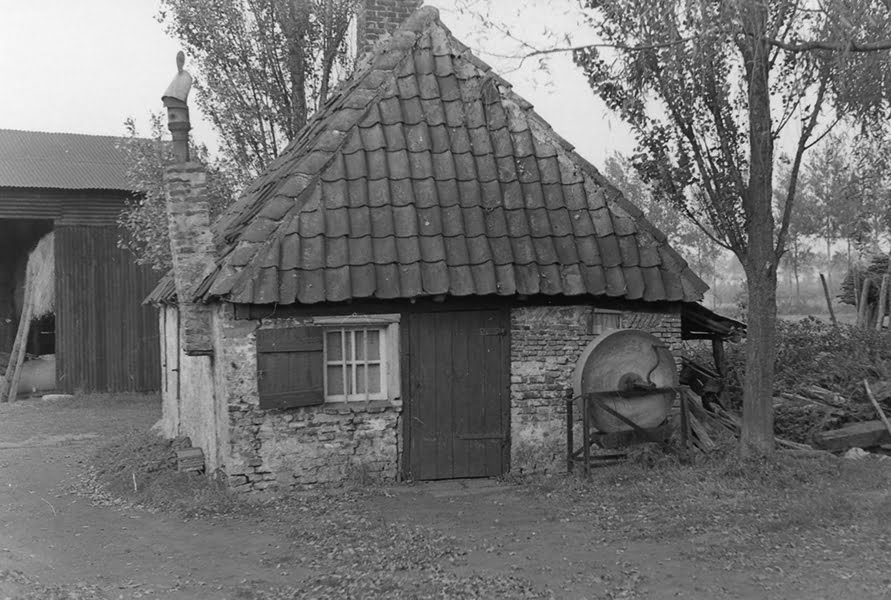About Farmhouse with Barn and Well Van Gogh

The painting in question (also referred to throughout this site as Farmhouse with Barn and Well, or PIQ) was purchased from a resident of Belgium and, prior to, had been found in a dilapidated inn while undergoing demolition.
Many inns, farmhouses, and cottages underwent demolition throughout the decades, some of which had stood for centuries. Many had succumbed to fire or became dilapidated due to sheer neglect or age, and as such, became safety hazards. Others were removed to make way for new structures and developments. The precise location of where the inn once stood is unknown.
All research thus far has been carried out by the designer of this site, who is knowledgeable on the life and works of Van Gogh. The next step to further determine authenticity leaves no option other than scientific analysis.
The scene depicted in the painting is reminiscent of hundreds of farms in rural Dutch communities; the white thatched cottage would have most likely served as the main abode while the brick barn in the foreground could have acted as a bakehouse
To determine authenticity, the painting needs to undergo additional scientific studies, in addition to what we have learned thus far through X-Rays, UV, IR, and knowledge gathered with regards to Van Gogh’s choice of paint and canvas.
Vincent was introduced to emerald green by his favorite paint supplier, Petrus Joannes Tyck, when he moved to Antwerp in late 1885. He also began using a different type of canvas. So, paint pigment analysis will determine if the underlying green paint came before his move to Antwerp or after.
Vincent’s move to Paris in February 1886 led to a change in canvas again, as his primary suppliers became Tasset et L’Hote, and also Pere Tanguy. He started using ready-made canvases in standard format; Some of which were stamped by the manufacturer or retailer, and also some of the stretcher bars were stamped, as is the case with Portrait of Agostina Segatori.
Canvases also varied with regards to a particular weave pattern as well as warp and weft count. Then there are the rolls of primed canvas Vincent used during his Dutch period and again between 1888 – 1890. In this instance, Vincent cut several pieces of canvas from the same 5 or 10m x 2.10m roll, which he then stretched onto strainer bars made by a carpenter in Nuenen. This explains the non-standard size of some of Vincent’s paintings.
Researchers can also pinpoint a time line from the particular paints Vincent used, for example, Tanguy’s paints were of poorer quality than all others, so again paints used from this supplier can determine an approximate time frame.
Analytical methods used to identify colorants in art include:
Chromatographic methods, Mass spectrometry, Multispectral imaging, Optical microscopy (PLM), Scanning electron microscopy with energy dispersive (or WDS) analysis, X-ray fluorescence analysis, Infrared/Raman spectroscopy, X-ray powder diffraction and more.
There is so much more that researchers can employ to determine authenticity and time frame. These measures, combined with information available from correspondence to Theo, have proven invaluable to group and add or omit works to Van Gogh’s oeuvre.
We have only carried out paint analysis on the clouds, where two samples were analyzed and confirmed as Artificial Ultramarine, and Zinc White. Black ground was also observed as well as many layers of paint







